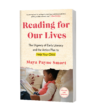Demon words. Oddballs. Rule breakers. The terms used to describe words—like indict and villain—whose spellings don’t match their pronunciations tend to veer negative. It’s as if the words broke with some established order and wreaked havoc on the language, fueled by their own rudeness or irreverence.
In fact, words are just words. Language itself is messy, though, full of complexity wrought by natural evolution and intentional intervention over time, place, and population. No authority makes English orderly or sets its spellings and pronunciations in stone, though many have tried.
English is as dynamic as the 1.5 billion-and-counting people who speak it. The language is inflected with the diverse accents, history, and vocabulary of those people, teachers, communities, and cultures. Old English was forged through conflict. The germanic tribes who invaded early Britain would recognize a number of words and word roots in today’s English. But the English of native speakers today, from Australia to Zimbabwe, would dazzle them with its breadth and variety.
So what’s the use in villainizing words as many parents, teachers, authors, and spelling programs do? Why characterize letters as misbehaving adversaries? Instead, why not treat them as intriguing—as tantalizing windows into a storied past?
And, on the flip side, what if we expected unexpected spellings? What if approaching spellings as rich, complex expressions of words’ pronunciations, meanings, and history was our default?
I think our teaching would improve with our appreciation for spelling’s nuances. If we stopped labeling spellings strange or evil, we might approach them with curiosity and eagerness to learn, versus disrespect or dismissal. We might bring our knowledge of word origin, history, meaning, and structure to spelling. We might access our familiarity with letter patterns and frequencies. We might bring a repertoire of skills and perspectives to the rich, deep subject. And our children, rather than inferring that these words are something to resent or even fear as too difficult, might absorb our positivity.
As parents our job is to teach the language, not judge it. So, I say, skip the negative labels. Focus on giving your child reliable strategies for learning the spellings they’ve struggled with.
Personally, I’ve shifted to calling hard-to-spell words quirky, instead of tricky. Quirky feels a little more positive. Like unusual, but in a good, endearing way. Still, my perspective and teaching might be even better served if I went all the way and thought of, and taught, unexpected spellings as gifts—special and distinctive.
What have you called or heard others call words that are difficult to spell? Do you think it matters? Are some terms better or worse to use when introducing the words to children? What would you call them?

In Beeline: What Spelling Bees Reveal About Generation Z’s New Path to Success, anthropologist Shalini Shankar offers readers a nuanced and scholarly account of a subset of immigrant parents today. Like Amy Chua’s tiger moms, the South Asian Americans Shankar examines—parents of kids who participate in the National Spelling Bee—value education above all. These so-called “bee parents” are just more likely to spend time supporting and advocating for their kids than doling out harsh criticism.
Their measured approach makes perfect sense in the context of the Scripps National Spelling Bee. The competition pits 11 million children a year against the 476,000 words in Webster’s Third New International Dictionary Unabridged. Only one kid (or eight in the case of an unprecedented multi-student tie in 2019) will hoist the trophy overhead each spring.
Beeline aims to examine and explain Generation Z’s unique drive and professionalism, not offer parenting advice. But I gleaned a few lessons from Shankar’s fascinating case study nonetheless. Here are some things bee parents can teach us all.
- Act on your priorities. Many parents say they value academics, but an honest look at how they spend their time and money may reveal otherwise. Bee parents invest consistently and wholeheartedly in their children’s spelling pursuits over many years—often sacrificing their own leisure time and career advancement.
Moms and dads featured in Beeline spend hours preparing word lists and study materials for their kids. One went so far as to design software that allowed her son review 1,000 words an hour and served up the words he struggled with more frequently until he mastered them. Bee parents also spend money on dictionaries, word lists, coaching, and travel. Their schedules and budgets demonstrate their commitment. - Learn alongside your child. Beeline depicts children’s development from spelling novices to experts. But parents’ growth is on display, too. The book shows moms and dads building the research, teaching, and coaching skills they need to support their kids’ development. Bee parents are willing to learn, make mistakes, and grow with their kids. They model focus, dedication, and consistency over long periods of time.
Pronunciation is a perennial challenge among bee parents. Numerous elite spellers that Shankar interviewed described misspelling words that they knew in bees, because they didn’t recognize the official pronunciation. Their parents had pronounced the words differently during practice (e.g. pronouncing righteous as ri-tee-us). The kids didn’t blame the parents for their errors, but together devised strategies to get better. Parents put in time to learn how to read pronunciation marks and produce the right accents, tones, and stresses. - Get out of the way. Bee parents can’t learn the words for their kids. The spellers have to own the work, putting in hours and hours of study alone. Elite spellers put in two to four hours of spelling study a day during the week and up to eight hours on holidays and weekends. As they age from elementary to middle schoolers, they take increasing ownership of the process, devising their own study methods, practice routines, and even software to meet their needs.
Bee parents support without coddling and their kids learn to persevere with poise and positivity.

Sources and Further Resources
Shankar, Shalini, “Beeline: What Spelling Bees Reveal About Generation Z’s New Path to Success,” (New York: Basic Books, 2019).
Every week, my daughter brings home a list of spelling words, along with a note on the spelling pattern the words exemplify. For example, a recent word list focused on examples of the short o sound spelled with an a following w or qu, e.g. squad, wash, and want. I appreciate that the words are organized around a single, specific spelling concept, so that any time spent on them reinforces a lesson she’s received. (Unlike thematic lists organized by holidays, seasons, or other topics that give little insight into spelling.)
I’ll quiz her on these words, but don’t spend time drilling them. I prefer to chat with her about the underlying concept instead. During the week described above, I asked her for more examples of words that fit the pattern and for examples of words that contradicted it. I asked her if want really has a short o sound. Depending on your accent or dialect, it may sound very different. I give her time to think and respond—because learning, thinking, connecting happens in those pauses.
I respect the teacher and comply with the homework she outsources to parents, but, more importantly, I have my own spelling agenda, too. I value thinking about and engaging with words much more than scores on weekly quizzes. I treat any word lists that come home as just points of departure to bridge back to the spelling ideas, concepts, and patterns that I’m focused on teaching.
As soon as kids can read, parents can start teaching them spelling, via a logical, sequential pattern program, like All About Spelling or Words Their Way for Parents, Tutors, and School Volunteers. Just ten minutes a day can make a world of difference for both your knowledge and your child’s spelling. I’ve found that the hard part isn’t the spelling content. It’s building the habit of teaching it every day. (Stay tuned for future posts on that topic.)
And don’t worry about undercutting or muddling the in-class instruction your children receive. Most kids aren’t getting significant spelling instruction in class, so you may be all they’ve got. (See my list of nine questions to ask teachers about spelling to get a sense of what is or isn’t happening in your child’s classroom.)
If your child is lucky enough to be taught spelling in school, your proactive work at home still adds value. Working one-on-one, you can move at your child’s pace and take time to go deeper in areas of greatest enjoyment or struggle. You can provide meaningful opportunities for word learning and spelling practice.
A good teacher can tell you which spelling patterns they’re teaching and when, so you can support those lessons at home if you choose. You can choose to rearrange lessons covering similar content from your home curriculum to reinforce schoolwork—or you can keep going in your own way, acknowledging but not emphasizing the homework. Your choice.
Most important is keeping your eye on the end goal, strong spelling to support fluent reading and writing—for life, not quizzes.
Does your child receive weekly spelling words? If so, do they seem to have a rhyme or reason?

Sources and Further Reading
Syringe. Fluorescent. Privilege. Spellings for words like these don’t exactly roll off the tongue. Their silent, ambiguous, and unusual letters create mismatches between print and pronunciation that often lead to misspellings. So what’s a speller to do?
I say, focus on every letter, identify the unexpected bits, and create a special pronunciation of your own that makes the letters easier to remember. Don’t use the alternative pronunciation in conversation, but lean on it all you want when writing. It’s just another bit of adhesive to stick the word in memory.
As an elementary school student, I often overpronounced words with tough-to-recall spellings when writing. For example, Wednesday always sounded more like windsday to me, putting me at risk of misspelling it. I knew this and would exaggerate the pronunciation to wed-nes-day (in my head) to help me spell it correctly. (I may or may not still do this today.)
Turns out. “Spelling pronunciations” are a thing. Many people slightly alter words’ pronunciations to better reflect their spellings when writing. And you would be smart to do so—and teach your kids to do so—because it works.
Researchers have studied the so-called spelling pronunciations and found that they are effective mnemonic devices (memory aids). The strategy helps kids (and adults) to learn commonly misspelled words. And the method is particularly powerful for poorer spellers.
The speller holds two pronunciations in mind—the conventional one used in speech and a second one that’s a crutch for spelling. The latter pronunciation is essentially an attention device. It helps spellers focus on all the letters in a spelling. It boosts memory of letters that don’t map to sounds at all or in the expected manner.
The takeaway? Explicitly teach kids to use spelling pronunciations. It’s not the end-all-be-all of spelling strategies, but it’s a worthy addition to all of our toolkits. It takes an arsenal.

Sources and Further Reading
Ocal, Turkan and Linnea C. Ehri, “Spelling pronunciations help college students remember how to spell difficult words,” Reading and Writing 30, 5 (May 2017): 947-967
https://www.thoughtco.com/schwa-vowel-sound-1691927
Kids love a good story and, when we parents take the time to teach them, can appreciate the stories behind how words come into existence. That history brings spelling to life, makes teaching time more fun, and helps answer the perpetual question of why many words aren’t spelled the way they sound. Plus, stories make spellings stick in memory better than just staring at or copying words.
Here’s a quick list that explains the origin of spellings from karaoke and hangry to squawk and Achilles tendon. As you read the descriptions below, see if you can identify which category each of these words fits into. Then review the answers at the end of this post.
1. Absorption. English swallows spellings from other languages, especially where food is concerned. Quiche, pizza, tortilla, anyone? Over time and with instruction kids can recognize that words derived from certain places tend to spell sounds a certain way. Such as French-derived words using ch for /sh/, as in chalet, chauffeur, and chivalry.
2. Compounding. Putting two independent words together to form a new word is the most universal method of creating more complex words across languages. But the meanings of some pairings are more transparent than others. Think doorbell versus hogwash. When kids recognize that a rattlesnake is a snake that rattles, they have a better shot at spelling it right than if they approached it letter by letter.
3. Imitation. The spellings of some words, “onomatopoeias,” are influenced by the sound of the item or action they refer to. Think of comic book favorites like, boom, pow and splat or other examples, like hiss, ping, and whack. Some examples like cuckoo have been present with various spellings since Middle English.
4. Naming. English takes names and turns them into words, too. Such “eponyms” include Leotard, hypnosis, and Mary Janes, along with thousands more. “Proprietary eponyms” includes words like kleenex, post-it, crockpot, and breathalyzer. They were born of brand names that got so popular that their names came to stand in for the whole product class.
Creating words from people’s names is particularly prevalent in medicine, where diseases, symptoms, and tests are often named after their discoverers. And more than 350 additional medical terms are derived from literary character names. (Fun fact: Some physicians argue against the use of eponymous distinctions, driven by a desire to better reflect the collective nature of medical discovery and to develop more clear scientific nomenclature for patients’ benefit.)
5. Abbreviation. Collections of initials, or “acronyms,” can be either pronounced letter by letter, like CNN, or as single words, like NASA (National Aeronautics and Space Administration) or GOAT (greatest of all time). Words can also be shortened by dropping off the end, such as adorbs (adorable) and rando (random).
6. Errors. Once a spelling goes viral, it’s hard to change it, not because it’s any more “correct” than an alternative spelling but because it’s more popular. Even mistakes have become conventional spellings because printing and distribution gave them wings. Dord, a misspelling, went unchallenged in the Oxford English Dictionary as a synonym for density. Expediate, invented when a politician misspelled expedite in the 1600s, lives on today.
7. Blending. Combining parts of two words to create a new one has given us frenemy (friend + enemy), glamping (glamour + camping), and cosplay (costume + play). Author Lewis Carroll named the blends that he created—like mimsy (miserable + flimsy) and chortle (chuckle + snort)—portmanteaus, after stiff leather suitcases with two compartments.
As for the words listed at the top of the post? Karaoke was imported from Japan and means “empty orchestra.” Hangry is a blend of hungry and angry. Squawk is likely an example of onomatopoeia as its name imitates the harsh abrupt scream of a bird. And Achilles tendon is an eponym derived from the Greek mythology warrior Achilles.
Taking an existing word and giving it a new meaning is yet another way to make a new word. And so, the list goes on.
Do you have other examples? Have you used stories to enliven spelling, reading and writing practice with your kids? Share in the comments.
Pin Me for Reference 📌:

Sources and Further Reading
Say Young Kim, Melvin J. Yap, and Winston D. Goh, “The role of semantic transparency in visual word recognition of compound words: A megastudy approach,” Behavior Research Methods (2018), doi:10.3758/s13428-018-1143-3.
Barry J. Blake, “Sound Symbolism in English: Weighing the Evidence,” Australian Journal of Linguistics 37 (2017): 286–313.
Rodin, Alvin E. and Jack D. Key, Medicine, literature & eponyms: an encyclopedia of medical eponyms derived from literary characters (R. E. Krieger Publishing Company, 1989).
Alexander Woywodt and Eric Matteson, “Should eponyms be abandoned? Yes.” BMJ 335 (2007): 424.
Cousineau, P. and G. Chadwick, The Painted Word: A Treasure Chest of Remarkable Words and Their Origins (Berkeley, California: Cleis Press, 2012).
https://www.npr.org/sections/alltechconsidered/2014/01/16/263096375/researchers-are-totes-studying-how-ppl-shorten-words-on-twitter
http://mentalfloss.com/article/56667/41-brand-names-people-use-generic-terms
https://theweek.com/articles/468355/10-whimsical-words-coined-by-lewis-carroll
https://www.cjr.org/language_corner/chortle.php
http://mentalfloss.com/article/82652/11-words-started-out-spelling-mistakes
Spelling is crucial for reading and writing. Still, spelling instruction limps along in the 21st century as “the abandoned stepchild in the family of language arts,” in the words of researchers R. Malatesha Joshi, Rebecca Treiman, Suzanne Carreker, and Louisa C. Moats. Despite evidence that spelling directly affects reading skill, it gets little time and attention in most American classrooms.
“Probably more than any other school subject, teacher intervention and influence on the spelling abilities of their students is currently negligible,” says language and literacy professor Misty Andoniou. “We are far more inclined to test spelling than to teach it.”
Parents: That means it may be up to us to focus on spelling. At the very least, it’s our job to find out what spelling instruction our children get at school, so we can respond. Checking homework folders and asking kids about in-school spelling is a start. But in lower elementary school, homework often has aims beyond its academic content. For example, my daughter’s first-grade teacher kept the homework content light. Its purpose was to instill good work habits—putting backpacks in a designated spot, checking homework folders nightly, and returning them to school each morning.
We parents need to talk to our children’s teachers to get a real feel for what they are teaching. Here are nine great questions to start the dialogue about spelling instruction:
1. What are your goals for spelling instruction in your classroom?
2. How much time do you devote to spelling in a typical week?
3. How do you choose spelling words?
4. Are spelling words selected for individuals, small groups, or the whole class?
5. How (and how frequently) do you assess and monitor students’ spelling?
6. How do you teach a spelling word or pattern?
7. How is my child’s spelling, relative to her peers and your grade-level expectations?
8. Can you show me samples of my child’s spelling and explain what the errors mean?
9. What should we do at home to support her spelling development?
There are no single right answers to any of these questions. Teachers can get good spelling results from a wide array of approaches. The key things to listen for, then, are the value the teacher places on spelling, their knowledge of spelling content, and their grasp of effective instruction methods.
You should be on high alert if your child’s teacher doesn’t teach spelling because they think kids will pick it up naturally through reading. Research doesn’t support this view. It’s also a problem if the teacher emphasizes memorizing individual words by copying them over and over again. Beware if a teacher’s spelling assessments just consist of marking words wrong. A good spelling teacher can explain the reasons behind spelling errors and address them in subsequent instruction.
Once you have a feel for what’s going on at school, you can better tailor spelling instruction at home to ensure that your children get what they need.
Pin Me for Reference 📌:

Sources and Further Resources
Joshi, R. M., R. Treiman, S. Carreker, and L. C. Moats, “How words cast their spell,” American Educator 32 (2008): 6–16.
English Language Arts Standards | Common Core State Standards Initiative, http://www.corestandards.org/ELA-Literacy/.
Texas Education Agency – 19 TAC Chapter 110, http://ritter.tea.state.tx.us/rules/tac/chapter110/index.html.
Graham, S. et al., “Teaching Spelling in the Primary Grades: A National Survey of Instructional Practices and Adaptations,” American Educational Research Journal 45 (2008): 796–825.
Doyle, A., J. Zhang, and C. Mattatall, “Spelling Instruction in the Primary Grades: Teachers’ Beliefs, Practices, and Concerns,” Reading Horizons 54 (2015): 1–34.
Adoniou, M., Spelling It Out: How Words Work and How to Teach Them (Cambridge University Press, 2016).
Puliatte, A. & Ehri, L. C. Do 2nd and 3rd grade teachers’ linguistic knowledge and instructional practices predict spelling gains in weaker spellers? Read. Writ. 31, 239–266 (2018).
It’s report card time again, and U.S. reading achievement shows no improvement. National reading scores dipped for fourth and eighth graders this year, according to the 2019 National Assessment of Educational Progress, also known as The Nation’s Report Card. Only one third of U.S. 4th and 8th graders are proficient readers. Not excellent or strong, mind you. Just competent, able to get by.
Mississippi was the only state in the union to post reading gains. We should applaud its improved literacy training for K-3 teachers, increased funding for literacy coaches, and raised academic standards. Still, the state’s not exactly excelling. A 2013 Mississippi law that holds children in the third grade until they meet end-of-the year reading standards helped fourth-grade scores by keeping struggling readers out of the test pool. And even with that, its reading scores remain below the national average.
Administered since 1969, the NAEP is the largest ongoing and nationally representative measure of student knowledge and skill that we have. Unfortunately, the reading assessment, launched in 1992, shows (decade after decade) that a minority of students meet grade-level reading expectations.
This year, two-thirds of the nearly 294,000 fourth- and eighth-grade students who took the test couldn’t locate information that’s stated in a text, infer the main ideas of an article, explain the theme of a story, or evaluate a text from multiple perspectives. Wow.
We, as a nation, have made no progress in improving literacy over the last few decades. The majority of U.S. students have limited reading skill. Worse still, the latest scores reveal that our lowest-performing students—those with scores in the 10th and 25th percentiles—are worse readers than the lowest performers ten years ago.
The bottom line for parents? Don’t assume that your child will get the reading instruction they need to thrive in school. Most children don’t.
Had you heard of the National Assessment of Educational Progress before? Were you surprised by the latest findings? What do you think we need to do to improve reading scores?

Sources and Further Reading
https://www.nationsreportcard.gov/
https://www.nationsreportcard.gov/reading/about/framework/?grade=4
https://nces.ed.gov/nationsreportcard/parents/
https://www.nationsreportcard.gov/focus_on_naep/#/reports/sampling
https://mississippitoday.org/2019/10/30/results-are-in-mississippi-students-no-1-in-the-country-for-reading-gains/
https://hechingerreport.org/how-mississippi-made-some-of-the-biggest-leaps-in-national-test-scores/
Seidenberg, Mark, “Language at the Speed of Sight: How We Read, Why So Many Can’t And What Can Be Done About It,” (New York: Basic Books, 2017). Chapter 10: How Well Does America Read? offers a clear and compelling analysis of the assessment, its research methods, the validity of its results, and implications for teaching.
November is National Family Literacy Month, organized by the National Center for Families Learning. Originally, the group worked with Congress to designated November 1 National Family Literacy Day in 1994. Now the organization celebrates the cause all November long and distributes a guide of 30 days of family activities to try.
I say, let’s prioritize literacy all year long and use the awareness month as an opportunity to reflect and recommit. Going hard for a short period of time, the 30 Days of Families Learning Together guide’s approach, requires levels of organization and motivation that are tough to sustain. Worse, the intensity can lead to burnout and a total drop-off once the time’s up.
If we truly care about the issues (from family literacy to lung disease, another November awareness topic), we should find ways to act on our commitment year-round. In the case of family literacy, this may mean working on our own family’s literacy and/or supporting literacy for families in our community or around the word.
That’s why I recommend that instead of setting aside extra time every day this month to hammer away at your family literacy goals, you instead set aside 30 minutes this month to brainstorm ways you can automate or embed literacy into your daily life for good. (And this system works for any issue you care about, awareness month aside.)
For example, ask yourself, what can I do this month that will bolster family reading in my home and others’?
Here are five ways to take action now that will have a long-term impact on family literacy in your home or community:
• Subscribe to a book-delivery service. Numerous monthly book clubs exist that will ship titles to your home for between $10 and $50 per month. Different clubs cater to children from infancy through the teen years and are curated by children’s lit experts, bookstores, or even kids themselves. Google “children’s book subscription services” to find a few.
• Subscribe to a family-friendly magazine. A magazine or newspaper subscription can serve a similar purpose. Use the periodical’s arrival as a cue to snuggle together on the couch, read some articles, and talk through new words, ideas, and information together.
• Join or start a book club. Nothing creates accountability like joining a group. Connect with a family book club at your local bookstore or library. If you can’t find one, start your own! A regular meeting schedule, enthusiastic members, and clear guidelines for book selection will get a startup club rolling.
• Eliminate the competition. Get rid of digital devices, or store tablets and TVs in inconvenient or uncomfortable locations to lessen screen-time temptation. Implement a reading-first policy, so screen time is accrued in proportion to how much you and your kids have read that day.
• Set up a recurring donation. Nonprofit organizations that bolster family literacy are in constant need of support. Find organizations in your area that equip families with the books, knowledge, skills, and support to set kids up for educational success. Then automate recurring donations to one or more. As a donor, you’ll receive communications about the group’s aims and impact, as well as opportunities to learn and get more involved.
When Family Literacy Month rolls around next year, you’ll have a built-in reminder to assess the impact of what you’ve done.
Take this annual opportunity to ponder questions like: Have you enjoyed the magazine or book-service subscription, or is it time to cancel? How has the book club fared? Have you discovered new reads, increased reading time, or made new bookish friends? What impact has lessening screen time had on your reading and family life (or have you stuck to your commitment)? How much have you contributed to the literacy organization you chose? Would you like to continue or increase your support based on what you’ve learned this year? Would you like to switch to or add a new group to support?
And just like that, you’ve turned an awareness month into a lifestyle.
What awareness month is resonating with you now—literacy-related or otherwise? How might you make your commitment last all year long?
Six years ago, I wrote a blog post titled How to Vanquish Email Overload Once and For All. “Go Serena Williams on your email messages,” I advised. The key, as I saw it then, was to whack emails out of your inbox with the “aggression and precision of a champion.” If you had a clear vision of where your emails’ content should land—the trash, Dropbox, your to-do list—then there was nothing to it but to do it.
In 2019, I still agree with the basic premise, but a busier and more complex life has highlighted one more factor: the need for dedicated email processing time. When I wrote my first “inbox zero” post, my daughter was two years old. I was on one nonprofit board and active in one volunteer group. But when I moved to Austin, my activity ballooned to as many as three boards and four volunteer groups at once. Plus, my daughter’s activity in school, sports, Girl Scouts, and more multiplied, bringing with it countless email notifications.
The volume of emails I received daily had grown tremendously, but my expectations around how much time I would devote to them hadn’t. The old methods and mindsets were no match for my new life’s demands, because I wasn’t allowing myself enough time to execute them. I rushed through messages, only partially and hurriedly addressing their content. I ignored messages until they resolved themselves or were no longer relevant. I passed the buck by “boomeranging” messages—scheduling them to return to my inbox a day or week later, pretending I’d have more time or interest to address them appropriately then.
When I increased the activities that required me to read and respond to messages, I needed to increase the amount of time that I spent on email accordingly. At first, I viewed increased email time as a capitulation to a time-sucking distraction from “real work.” But when I leaned into it, I realized that the vast majority of the content was valuable. In my race to keep up with messages, I had already unsubscribed from junk newsletters and unwanted notifications. What remained had value.
Despite the high volume of email, my inbox’s content has never been more interesting or important than it is these days. Sure, it takes at least 2 hours a day to responsibly process it all, but it’s good stuff. The messages I receive are from organizations and people I am deeply engaged with, and they’re about matters I’ve chosen to stay updated on. They warrant a certain amount of time and respect.
With this new perspective that email done well is part of the work, I’m back to clearing my primary inbox to zero once or twice a day. I am experiencing the extraordinary peace of mind that comes from handling messages with care and intention. I know nothing’s slipped through the cracks. I know I’m responsive to the requests of those I care about or work with. I know I’m taking care of business.
Most importantly, I’m recognizing my limits. I’m not adding one more activity to my plate. In fact, I can think of a couple that need to go.
To recap, my new inbox zero approach goes something like this:
Step 1: Call the shots. Select a time or trigger that tells you it’s time to face-off against your emails. I attack my inbox late in the morning, after I’ve completed my writing priority for the day. Email’s important, but it’s not first.
Step 2: Be aggressive. Look at the one shot (er, email) that’s in front of you and resolve to send it flying over the metaphorical net to where it belongs. This may be into the trash can, into someone else’s inbox (via a thoughtful reply or judicious forward), onto your to-do list, into a file for future reference, or unsubscribing from future messages altogether. That’s it. Those are your only choices.
Step 3: Know the endgame. Direct your shots by getting very clear on the kinds of messages you routinely receive and thinking through the best landing spots for the information they contain. Put the content itself somewhere useful, like your calendar, a task list, or your project notes. Do not use your inbox as a reminder system!
How well are you managing your email inbox? What works well for you? What’s not working?
Memorization gets a bad rap, but it works very well for some words and children. Time and again researchers find that focused attention, transcription, and recollection of select words helps kids master challenging spellings. The key is to treat memorization as a supplement, not as the sole or even primary method of spelling instruction.
First and foremost, parents teaching spelling at home should strive to create a culture of interest and engagement with words. We should focus on weaving a variety of spelling games, routines, and activities into daily life. But here’s some advice for getting the most out of memorization, the last resort for words kids just can’t recall any other way.
The “cover-copy-compare” method is your best bet for training hard-to-learn spellings. Students have used the procedure across subjects, from math to geography, and significant research has documented its effectiveness. Plus, it’s straightforward, low-cost and time-efficient—a win for parents.
For spelling, the “look-say-cover-write-check” variation of cover-copy-compare is particularly effective. (Yes, these are technical terms.) As a parent, your job in this case is to support your child in studying important words they’ve failed to learn by other means (that you’ve taught them). You provide the model spelling, explain the self-study practice routine, and get out of the way.
Then it’s up to the child to follow the procedure:
1. Look at a correctly spelled word and mark the challenging parts.
2. Say the word.
3. Cover the word, close their eyes, and try to visualize the word in their mind.
4. Write the word on paper.
5. Check for correctness by comparing the written word to the model.
6. If incorrect, note the nature of the error and copy the word correctly.
I’ve witnessed this method firsthand. My daughter’s teacher sent home an 18-step variation of this spelling practice routine. She taught the procedure to students in class. Then she shared an abbreviated version in a video demo for parents—the students just copied words once in the video, instead of the prescribed three times. This was the first sign that this process might be too long and repetitive for at-home use. At any rate, here’s the full procedure, in case it works for you:
1. Look at the model word.
2. Say the word.
3. Define the word to distinguish it from homophones (words with the same pronunciation but different spellings).
4. Analyze each letter of the word one-by-one and mark the challenging parts.
5. Say the word out loud again.
6. Name each letter while tracing it.
7. Name each letter while tracing it a second time.
8. Name each letter while tracing it a third time.
9. Close eyes and write the word in the air with the index finger. This procedure is often called “air writing” or “memory writing.”
10. Air write the word a second time.
11. Air write the word a third time.
12. Say the word again.
13. Spell it on paper without access to the model word.
14. Spell it a second time.
15. Spell it a third time.
16. Compare to the model word.
17. Check for correctness.
18. If incorrect, note the error and copy again.
The full procedure felt like overkill to me so I never asked my daughter to do it. Later, I got some support for my view when I came across research suggesting that repeated word copying adds no value. It’s the self-evaluation and self-correction steps in the practice routine that matter most.
It’s worth parents’ time to help kids memorize challenging words by focusing on their sound, meaning, and construction; practicing recalling the spelling; comparing their spelling to the model; and fixing mistakes. Just don’t get stuck there: your main aim is to teach how the English spelling system works, not to train individual words.
Read my post on How Children Learn to Spell for the lowdown on where memorization fits among spelling strategies, and keep an eye out for more spelling tips in upcoming posts.

Sources and Further Reading
Joel Erion, Cindy Davenport, Nicole Rodax, Bethany Scholl and Jennifer Hardy, “Cover-Copy-Compare and Spelling: One Versus Three Repetitions,” Journal of Behavioral Education 18, no. 4 (December 2009): 319-330
Olivia O’Sullivan, “Teaching and Learning Spelling,” in The Literate Classroom, ed. Prue Goodwin (London: Routledge, 2017), 141-156.

